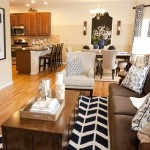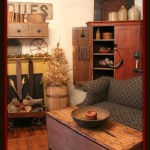How To Decorate With Sage Green Walls
Sage green has emerged as a popular paint color choice for interior design, offering a calming and versatile backdrop for various decorating styles. Its muted, earthy tone provides a sophisticated alternative to brighter greens, creating a serene and inviting atmosphere. Understanding how to effectively decorate with sage green walls involves considering complementary colors, furniture styles, and accessory choices to achieve a cohesive and aesthetically pleasing space. This article will provide a comprehensive guide to incorporating sage green into interior design.
The appeal of sage green lies in its ability to blend seamlessly with different design aesthetics. From minimalist to bohemian, and farmhouse to contemporary, sage green provides a neutral, yet distinctive, foundation. Its subtle nature allows for flexibility when choosing furniture and accessories, as it neither overwhelms nor fades into the background. Proper application of design principles, such as color theory and proportion, is crucial for maximizing the potential of sage green walls.
Understanding the Undertones of Sage Green
Sage green is not a monolithic color; it exists on a spectrum with varying undertones. Some sage greens lean towards a cooler, more blue-toned hue, while others possess warmer, more yellow-toned characteristics. Identifying the specific undertones in a particular shade of sage green is essential for selecting complementary colors and ensuring a harmonious color palette. Cooler sage greens pair well with cool neutrals, such as grays and whites with blue undertones, while warmer sage greens complement warmer neutrals, like creams and beiges.
To determine the undertones accurately, it is advisable to compare the paint sample to other colors known for their distinct warmth or coolness. Comparing the sage green sample to a true gray or a pure white can reveal subtle variations in color temperature. Natural light also plays a crucial role in perceiving the undertones. Evaluating the color under different lighting conditions throughout the day will provide a more comprehensive understanding of its characteristics.
Consider the existing elements in the room when deciding on a sage green shade. Existing flooring, furniture, and textiles can influence how the color appears. For example, warm wood flooring may complement a warmer sage green, while cool-toned metal fixtures may coordinate better with a cooler sage green. Paying attention to these nuances will contribute to a more balanced and visually appealing space.
Choosing Complementary Colors
Selecting complementary colors is a critical aspect of decorating with sage green walls. The goal is to create a balanced and visually stimulating environment. Several color palettes work effectively with sage green, each offering a different aesthetic.
Neutral Palettes: Combining sage green with neutral colors, such as whites, creams, grays, and beiges, creates a sophisticated and calming atmosphere. Using varying shades of these neutrals can add depth and dimension to the room. For instance, pairing sage green walls with off-white trim and light gray furniture provides a serene and timeless look. Incorporating textures, such as linen or wool, can further enhance the visual interest within a neutral palette.
Earthy Palettes: Drawing inspiration from nature, earthy palettes can complement sage green beautifully. Terracotta, browns, and ochre tones create a warm and inviting atmosphere. These colors can be incorporated through furniture, accessories, and textiles. A terracotta-colored rug or brown leather armchairs can create a grounding effect against sage green walls.
Accented Palettes: For a more vibrant and dynamic look, consider using accent colors alongside sage green. Mustard yellow, dusty rose, and deep blues can provide pops of color that contrast and complement the muted green tone. These accent colors can be introduced through throw pillows, artwork, or decorative objects. It is important to use these colors sparingly to avoid overwhelming the space and maintain a balanced aesthetic.
Monochromatic Palettes: A monochromatic palette involves using different shades and tints of the same color. This approach can create a cohesive and sophisticated look. Using lighter and darker shades of green can add depth and dimension to the room without introducing contrasting colors. This palette creates a subtle, yet intentional, aesthetic.
It is recommended to test color combinations by using paint swatches and fabric samples before committing to a full-scale renovation. This allows for a visual assessment of how the colors interact under different lighting conditions and in relation to existing elements in the room.
Selecting Furniture and Accessories
The choice of furniture and accessories plays a crucial role in completing the overall look of a room with sage green walls. Selecting pieces that complement the color scheme and enhance the desired aesthetic is essential.
Furniture Styles: Various furniture styles can work well with sage green, depending on the desired look. Mid-century modern furniture, with its clean lines and natural wood tones, creates a harmonious and balanced space. Farmhouse-style furniture, with its rustic charm and comfortable feel, adds warmth and character to a room with sage green walls. Contemporary furniture, with its sleek designs and minimalist aesthetic, provides a sophisticated and modern contrast.
Textiles and Fabrics: The choice of textiles and fabrics can significantly impact the overall feel of a room. Natural fibers, such as linen, cotton, and wool, complement the earthy tone of sage green. These materials add texture and warmth to the space. Velvet and silk can introduce a touch of luxury and sophistication. Consider using patterned fabrics with subtle designs to add visual interest without overwhelming the space. Geometric patterns and floral motifs in complementary colors can work effectively.
Accessories and Decor: Accessories and decor provide opportunities to personalize the space and add finishing touches. Plants and greenery complement sage green beautifully, enhancing the natural and calming feel of the room. Metal accents, such as brass or copper, can add warmth and sophistication. Artwork with complementary colors can create focal points and add visual interest. Mirrors can reflect light and create a sense of spaciousness. Choose accessories that reflect personal style while maintaining a cohesive and balanced aesthetic.
When selecting furniture and accessories, consider the scale and proportion of the room. Oversized furniture can overwhelm a small space, while undersized furniture can get lost in a larger room. Maintaining a balanced ratio between the furniture and the room's dimensions is crucial for creating a visually pleasing environment. Consider the functionality of the space when selecting furniture. Choose pieces that are both aesthetically pleasing and practical for the intended use of the room.
Lighting also has influence to the overall look of a room. Adequate lighting is essential for showcasing the beauty of sage green walls and other design elements. Natural light is ideal, but artificial lighting can be used to supplement or enhance the natural light. Use a combination of ambient, task, and accent lighting to create a well-lit and inviting space. Warm-toned light bulbs can enhance the warmth of the sage green, while cool-toned light bulbs can emphasize its cooler undertones. Adjust lighting as needed to achieve the desired effect.
Decorating with sage green walls requires careful consideration of color palettes, furniture styles, and accessory choices. By understanding the undertones of sage green and selecting complementary colors, individuals can create a cohesive and aesthetically pleasing space. Prioritizing balance and harmony in the overall design contributes to an inviting and stylish interior.

Sage Green Decorating Ideas Contemporary Living Room Design Accent Walls In Paint Colors For

What To Know About Decorating With Sage Green

18 Sage Green Living Room Ideas For A Subtle Fresh Look Coco Lapine Designcoco Design

Minimalist Living Room With Sage Green Walls Coco Lapine Designcoco Design

Color Study Sage Green Living Room Ideas Colors

18 Sage Green Living Room Ideas For A Subtle Fresh Look Coco Lapine Designcoco Design

46 Soothing Sage Green Home Decor Ideas Digsdigs

Neutral Transitional Dining Room With Folk Art Style Sage Green Living Color Scheme

Minimalist Living Room With Sage Green Walls Coco Lapine Designcoco Design

46 Soothing Sage Green Home Decor Ideas Digsdigs







